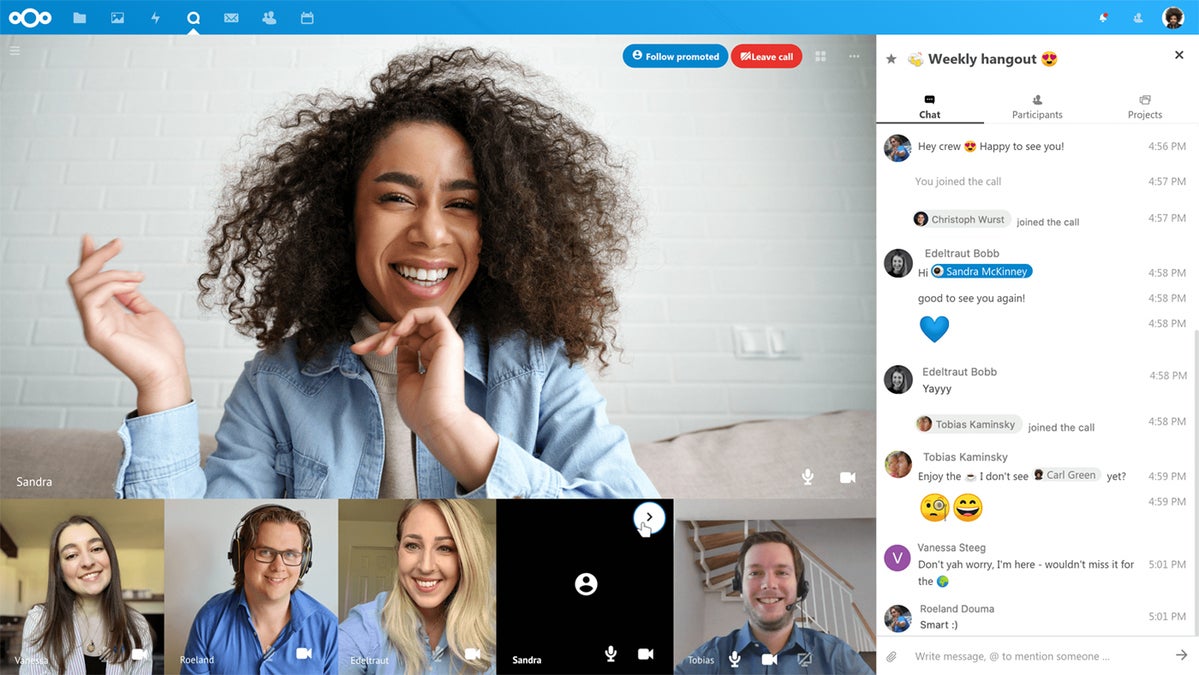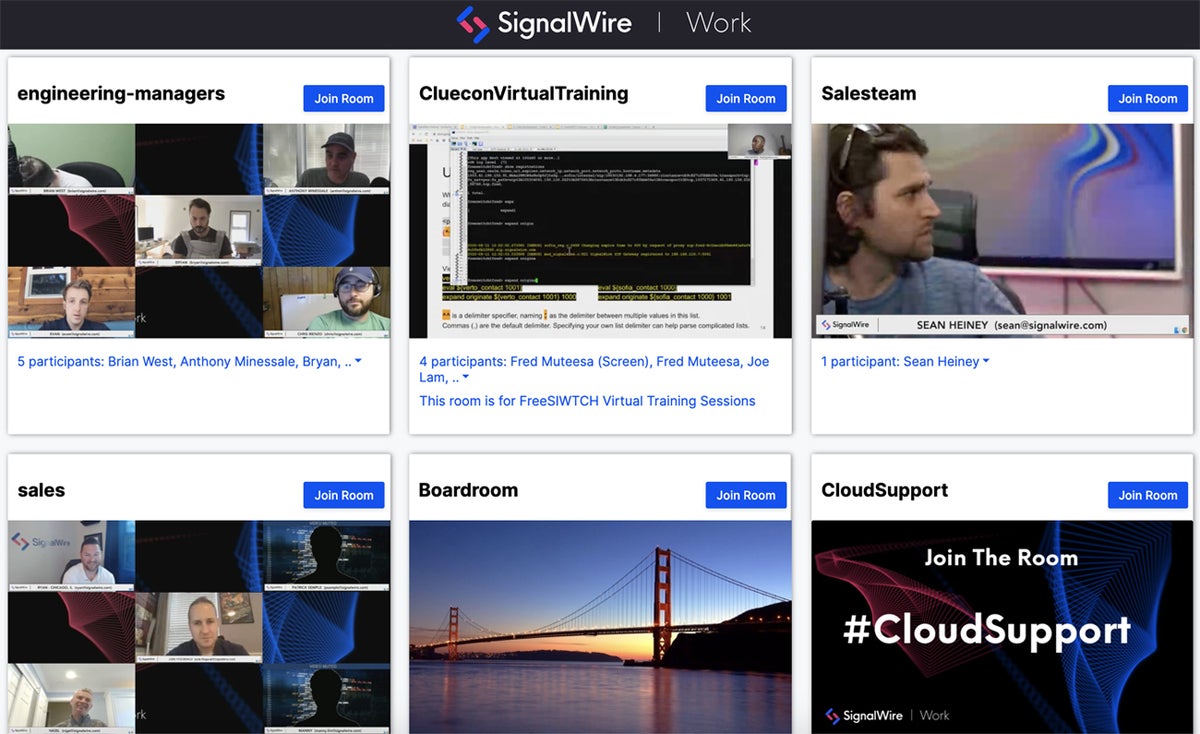As remote work becomes more permanent, companies may want to explore collaboration alternatives that cost less than mainstream options, offer heightened privacy and security, or just contribute to the open-source movement.
As the world’s knowledge workers continue to work from home due to the ongoing Covid-19 pandemic, using a videoconferencing application is as common as checking your email or opening a spreadsheet. Since many decisions regarding technology tools for remote workers at the start of the pandemic were made based on urgency, ease of use, availability, and cost, many companies turned to free or inexpensive videoconferencing tools such as Zoom or Google Meet for their immediate needs, with some larger organizations ponying up for enterprise versions of those applications.
Now that a large majority of us are working from home with no immediate plans to return to the office full time, companies are exploring alternative videoconferencing platforms for a variety of reasons. These include looking for a lower-cost option, searching for something more secure, or supporting the altruistic and transparent nature of open-source software. In addition, videoconferencing vendors that offered their commercial platforms for free earlier in 2020 may end these freebies as we move into 2021.
Fortunately, there are many choices for companies looking to go beyond the mainstream commercial products. The demand for videoconferencing due to the pandemic has ramped up the development of many open-source projects, with end users and companies able to benefit from more robust offerings than may have been available in recent years. Many of these projects utilize WebRTC, the open-source, real-time communications framework developed and maintained by Google and others that supports audio, video, and data communications.
For this roundup, we are focusing on open-source tools and platforms that offer videoconferencing as a main feature. Some of these are free, and some of them have commercial upgrade options. With some, customers set up, host and maintain the software on-premises, while other platforms provide cloud-based hosting, and some offer both options.
Some of them are part of a larger collaboration offering, where videoconferencing is just one feature within the platform. Indeed, as we found with our dives into free screen-sharing apps and enterprise-friendly remote desktop software offerings, the lines can get blurry between tools meant for videoconferencing, web conferencing, text chat, VoIP, and other features such as screen sharing, file sharing, and whiteboarding.
With a variety of options to choose from, we hope you’ll find one that’s right for your organization. Platforms are listed in alphabetical order, with no preference or ranking to suggest that one is better than any other. We’ve included a features table so you can compare the options side by side.
- Apache OpenMeetings
- BigBlueButton
- Element
- Jami
- Jitsi Meet
- Linphone
- Nextcloud Talk
- OpenVidu Call
- SignalWire Work
- Wire
- Feature comparison
Apache OpenMeetings
As part of the Apache open-source project, OpenMeetings provides users with videoconferencing among other groupware tools such as instant messaging, whiteboard sharing, and collaborative document editing. There is no desktop or mobile app; end users access the system via a web browser on their desktop or phone. The latest version, 5.0.1, was released in September 2020.
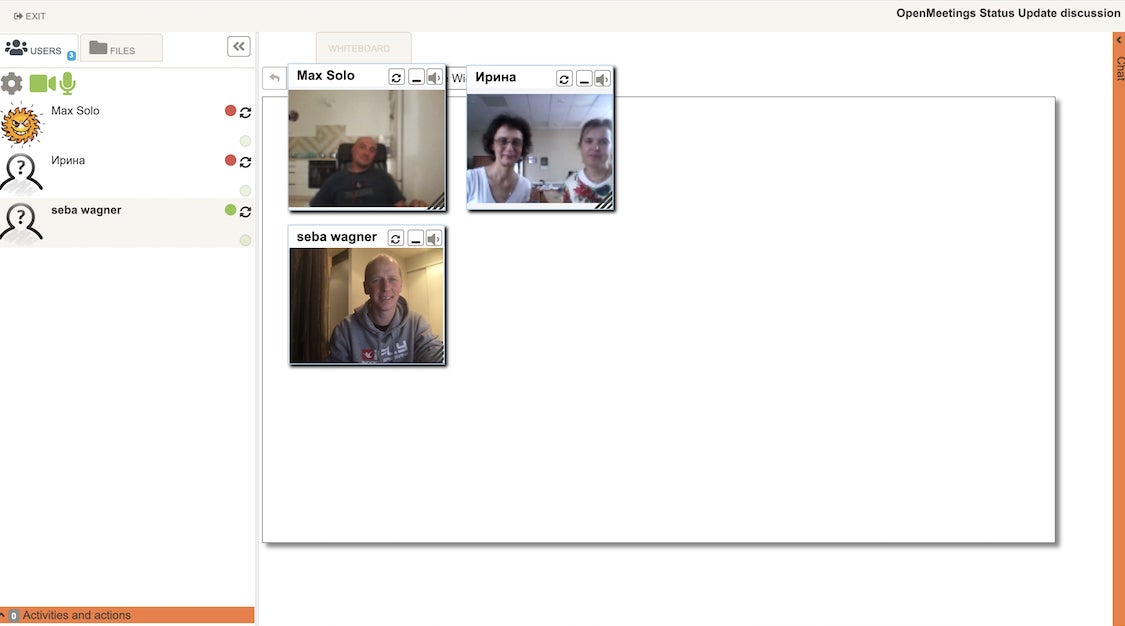 Apache OpenMeetings
Apache OpenMeetingsAs with many commercial videoconferencing offerings, OpenMeetings users can record calls (with output via .AVI or .FLV format), choose different camera resolutions, and switch input devices during a call. The system includes moderating features to give users different permissions, and private messaging is also available. Other features include polling and voting, and the platform provides backup features.
Meetings can be planned through the OpenMeetings calendar, or you can connect to external calendar applications such as Google Calendar and Outlook. While you will likely deploy OpenMeetings on your own server on-premises, hosted service providers are also available. Code and more details are available on GitHub.
BigBlueButton
Geared more for the online learning and education community than for the corporate world, BigBlueButton is a professional conferencing system that provides real-time sharing of audio, video, slides, chat, and an instructor/presenter’s screen. Students/attendees can also engage with others via the sharing of emoji icons, polling, and breakout rooms.
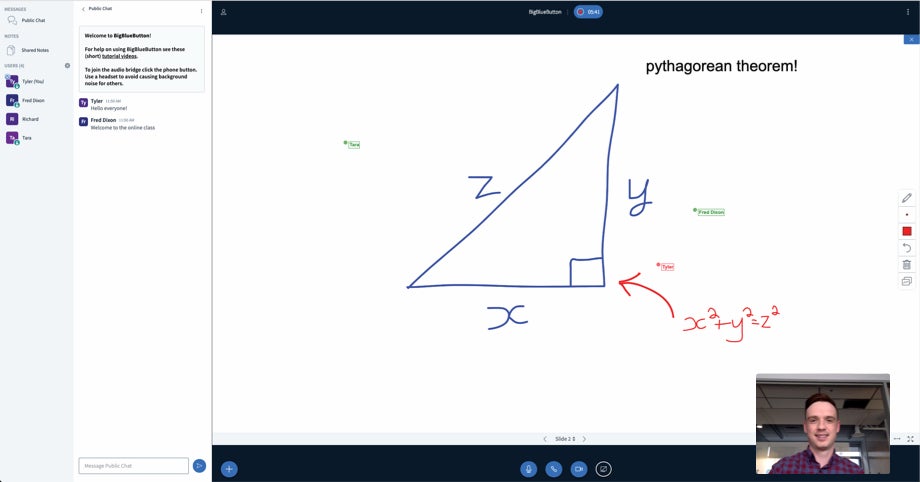 BigBlueButton
BigBlueButtonWhile most of the integration is aimed at learning management systems, companies that want to use the platform for videoconferencing purposes can certainly do so. BigBlueButton is an HTML5-based web application that can run on your own server, or you can use a hosted service. Your users connect via their browser (desktop or mobile), so there’s no software to install on their devices. BigBlueButton’s code and more details are available on GitHub.
Element (formerly Riot)
Element is a secure collaboration application for the decentralized, open-source Matrix communication network. The company behind the app, also named Element, offers a hosting service that runs on Matrix called Element Matrix Services.
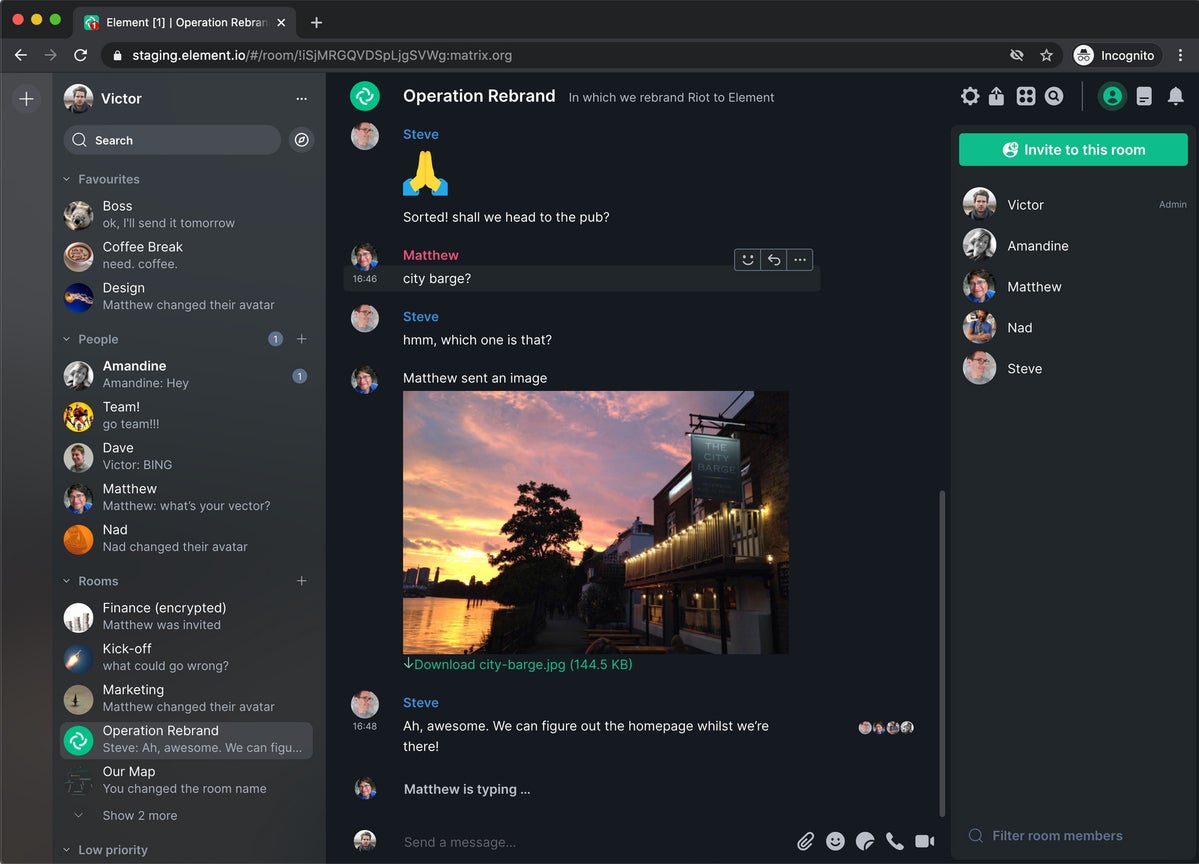 Element
ElementProtected by end-to-end encryption and cross-signed device verification, the chat application is designed to be a secure option for collaborating with teams, friends and organizations. The overall platform is meant to be an open-source alternative to Slack, giving users the chance to create communities, send text messages, and start videoconferences within a group or community. As a chat app first and foremost, Element lacks some of the advanced videoconferencing features offered by other platforms, such as the ability to mute/unmute participants and schedule meetings.
While Element is a for-profit company, its founders created the Matrix protocol and are Guardians (legal directors) of the nonprofit Matrix.org Foundation. Available via web, mobile, and desktop apps, Element is free for individuals and small groups. Teams and businesses need to subscribe to an Element Matrix Services plan, with prices starting at $2 per user per month. Versions on GitHub include Element Web, Element Desktop, Element iOS and Element Android.
Jami
In response to the pandemic, Jami decided to transform its peer-to-peer communication software into a group communication platform. Its latest version, called “Together,” was launched in October 2020 with the aim of enabling large groups to collaborate while preserving individual privacy and security.
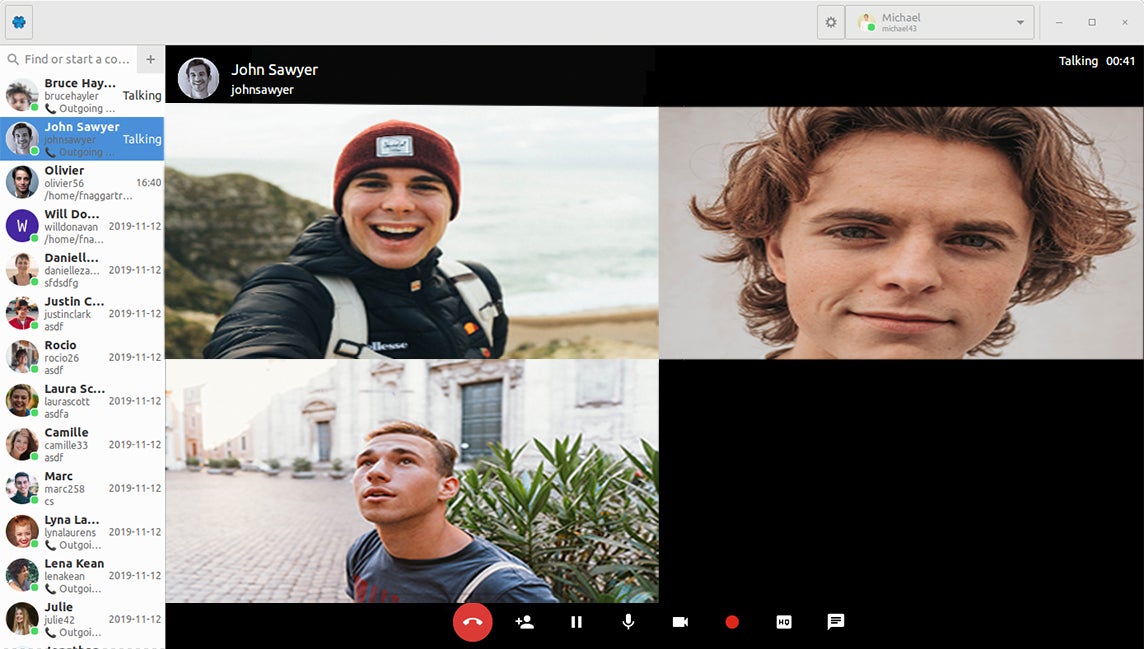 Jami
JamiOne of Jami’s unique selling points is its commitment to operating on low-bandwidth networks, which opens up communication to those with limited internet access. Apps are available for Windows, mac OS, Linux, iOS, Android, and Android TV.
In a videoconference, users can dynamically change the conference layout, select participants to highlight, share presentations or stream media in full screen. With one click, the application can turn into a conference server, with the ability to create a permanent or temporary room. Once one of these is created, invited users can meet, see and talk with each other at any time, even if the host is absent or on another call. Code and additional details are available at Jami’s site.
For companies looking for a higher level of control over users, Jami created the Jami Account Management Server (JAMS). This takes advantage of the distributed network architecture but provides administrators with the ability to create and manage users and groups, control permissions, and connect to an LDAP server or Active Directory service.
Jitsi Meet
As part of the Jitsi collection of free and open-source videoconferencing and instant messaging applications, Jitsi Meet provides instant free videoconferencing without needing to create an account. Users can share their desktop or presentations, chat with each other, and even use emojis within a video call. Invitations can be created with custom URLs, including “fun meeting” URLs that are easier to remember than a long string of garbled letters.
 Jitsi
JitsiUsers can create meetings via the meet.jit.si web site, or companies can host their own Jitsi Meet server or instance. In addition, you can embed a Jitsi room into your own website. Code and additional details are available on GitHub.
The group is currently working on providing end-to-end encryption functionality, so companies looking for this feature may want to hold off before it moves beyond its experimental phase.
The service is supported and operated by unified communications vendor 8×8, which uses the technology in its own commercial videoconferencing offering. The commercial version adds data transcription and meeting history options.
Linphone
Designed for smartphones, tablets and desktops, Linphone is an open-source VoIP project that includes high-definition audio and video call functionality. Features of the Linphone softphone app include instant messaging, group chat, and file sharing, with account creation and remote configuration available via QR code or URL.
 Linphone
LinphoneThe Flexsip server software can be hosted on-premises or in the cloud, and is interoperable with most PBXs and SIP servers, including any SIP VoIP operator. Your employees can use Linphone via desktop apps for Windows, macOS and GNU/Linux; mobile apps for iOS and Android; or the web.
The group says Linphone offers secure communications with encryption based on the ZRTP and SRTP-DTLS encryption protocols, using AES 128-bit or 256-bit key length, along with safe elliptic curves Diffie-Hellman (ECDH) X25519 and X448.
Belledonne Communications supports the Linphone project and provides development assistance, custom software development, and support services to customers. Licensing options and more details are available at the Linphone site, and code is available on GitHub.
Nextcloud Talk
Nextcloud is an open-source, on-premises content collaboration platform that features a slew of collaboration tools, with videoconferencing highlighted through the Nextcloud Talk plug-in. The platform aims to give control of these services directly to IT groups for integration with existing architecture. If you are not already using Nextcloud for other features, installing the entire platform for just the video features in Nextcloud Talk might be a bit of overkill.
Nextcloud
The Talk plug-in supports screen sharing, online meetings and other web conferencing features; users connect via the web or mobile apps for iOS and Android. Peer-to-peer audio and video calls are encrypted, and it utilizes WebRTC for cross-platform support. With the optional Nextcloud Talk High Performance Backend starting at $4,500, companies can enable webinars and public web meetings. Code and additional details are available on GitHub.
OpenVidu Call
The OpenVidu platform lets developers create custom videoconference services via the OpenVidu Call application, which can also be used as a standalone videoconferencing app. Quite possibly the best-looking videoconferencing offering among these entrants, OpenVidu Call includes features such as multiparty videoconferencing, smart layouts, integrated chat, and screen sharing.
OpenVidu
Companies can customize the system according to their own needs, with the ability to change the GUI, branding, and icons and to add features such as recording. The platform is designed to be installed on-premises or in Amazon Web Services. A proprietary professional version includes enterprise-level features, including advanced monitoring and support for other open-source media services. The OpenVidu site has pricing details for the pro version and documentation for the open-source and pro versions.
SignalWire Work
A unique spin on the videoconferencing concept comes from SignalWire. Instead of creating videoconference rooms that appear virtually at a designated time and then vanish after the meeting is complete, SignalWire Work keeps the rooms open at all times. As when walking around a physical office, users can see who is available for discussion and can “pop in” to chat with co-workers in an impromptu meeting setting.
SignalWire
The cloud-based platform has no apps or plugins to install — users access the system via SignalWire’s cloud. Users can set up virtual lobbies or “water cooler” areas, and individual rooms can be locked for closed or private meetings.
The company offers both a basic plan and a professional plan that adds features like recording, transcription, and AI noise cancellation. Pricing is based on number of users, and there’s a 30-day free trial for those interested. Code details are available on GitHub.
This option might appeal to companies whose workers used to rely on impromptu in-office collaboration to be productive prior to the pandemic, as a way to provide a similar environment in the remote working world. Just remind everyone that they may be on camera for longer periods of time than with Zoom calls, where the camera goes off when the meeting ends.
Wire
Launched in 2018 by audio engineers who worked at Skype, Wire touts itself as “modern day collaboration meets the most advanced security and superior user experience.” The company says its platform is 100% open source, independently audited, and complies with ISO, CCPA, GDPR and SOX.
Wire
Features include instant messaging, voice and video calls, file sharing, and external collaboration, protected via end-to-end encryption. Up to 25 participants can join an audio call; video calls are limited to 12 participants.
Depending on the plan they choose, customers can deploy in the cloud or on their own premises. Options for business include the Pro and Enterprise versions, as well as the Wire Red service, an on-demand crisis collaboration suite. This version is a pre-provisioned, secure communication platform aimed at companies where emergencies or security breaches have created the need for fast communications. Code and additional details are available on GitHub.
Open-source videoconferencing software: Feature comparison
(Scroll or drag table to the right to see more columns.)
But wait, there’s more!
In the course of researching these platforms, we came across a couple other companies and platforms worth mentioning. While not completely within the bounds of our list, they can provide some cool video chat and communications options:
- Signal: Free secure messaging and one-to-one video calls via mobile devices and desktops. Video calls are currently in beta testing for the desktop version.
- Chat: Intended as an open-source alternative to Slack, Rocket.Chat also lets users communicate via videoconference. Options include self-managed (on-premises or private cloud) as well as cloud-based hosting via Rocket.Chat.
This article originally appeared on ComputerWorld.


